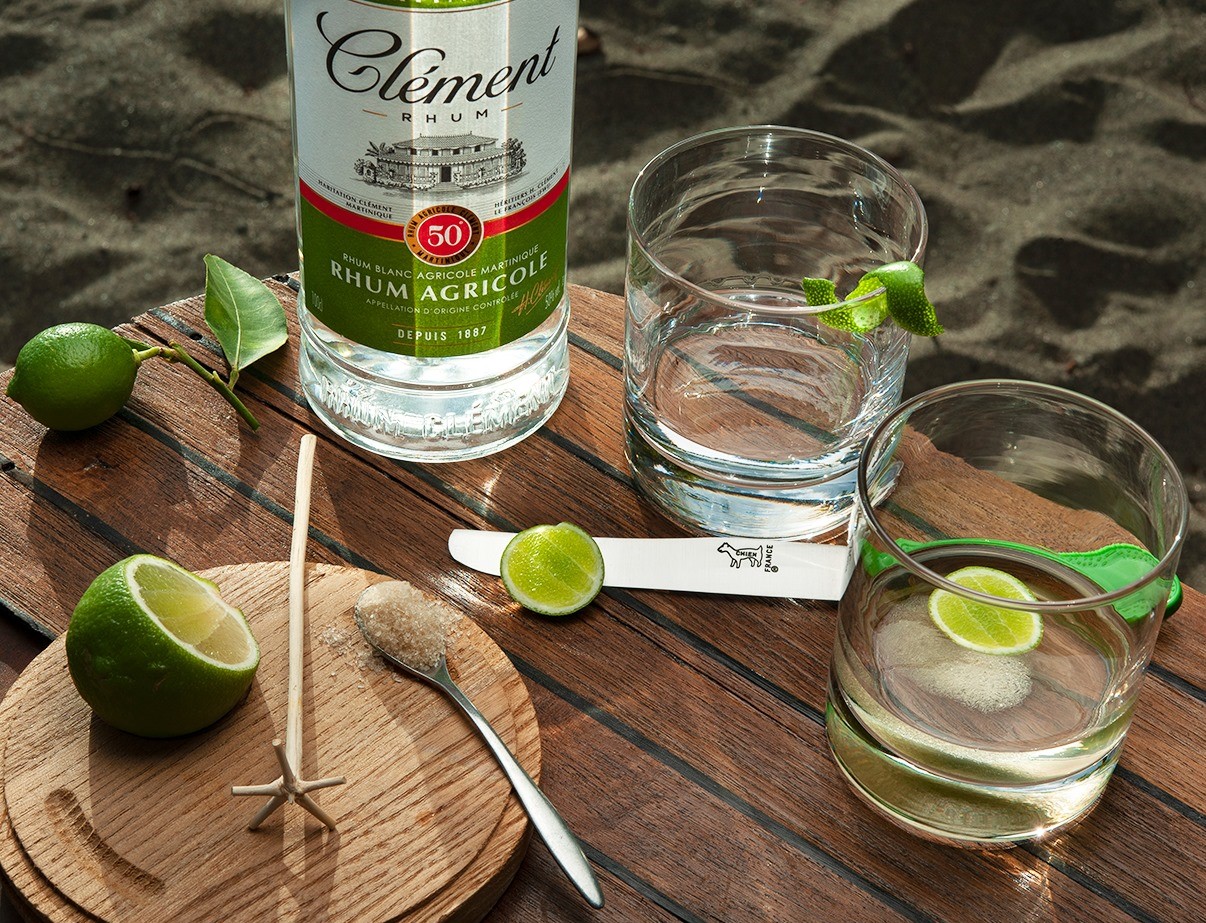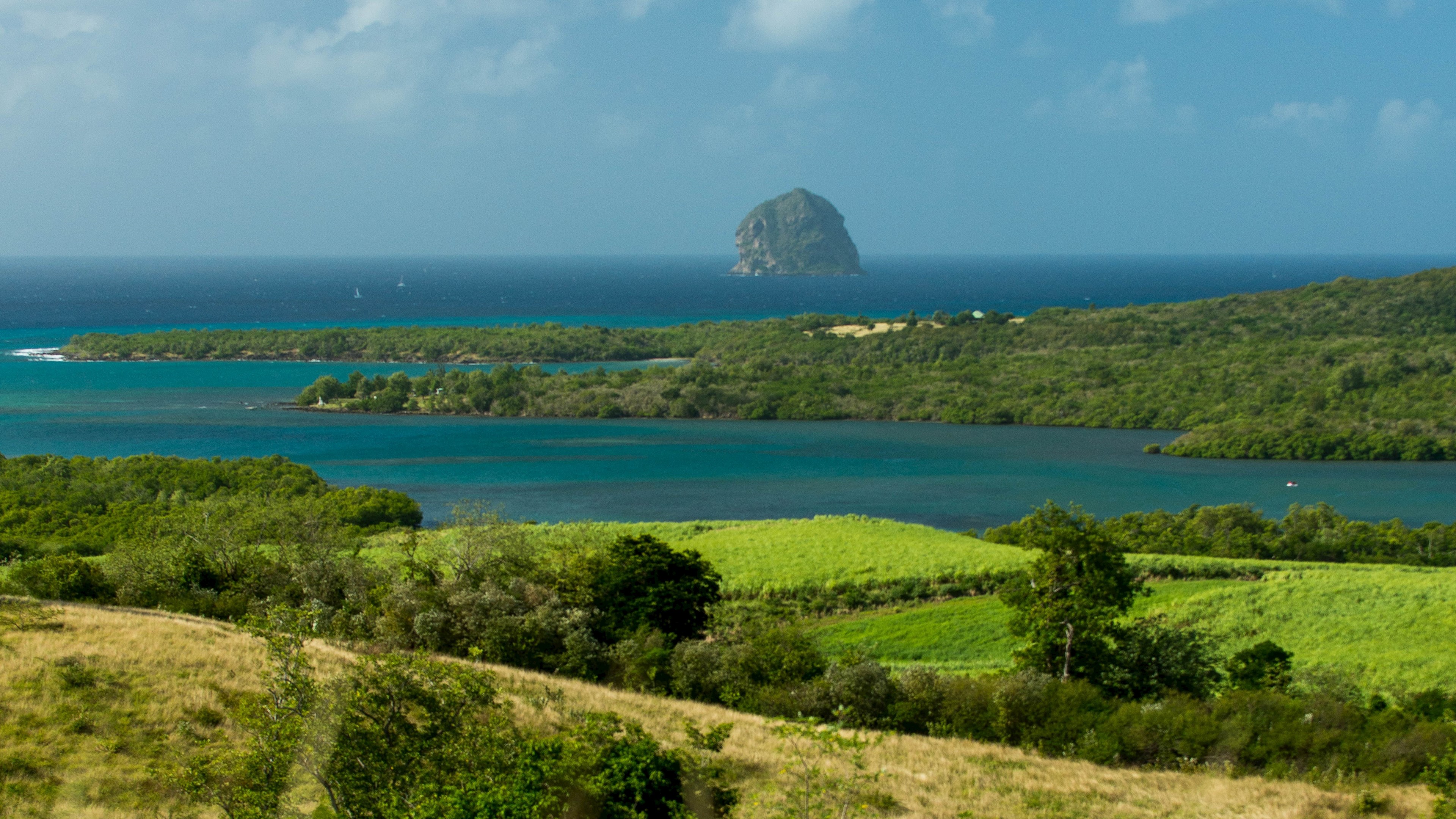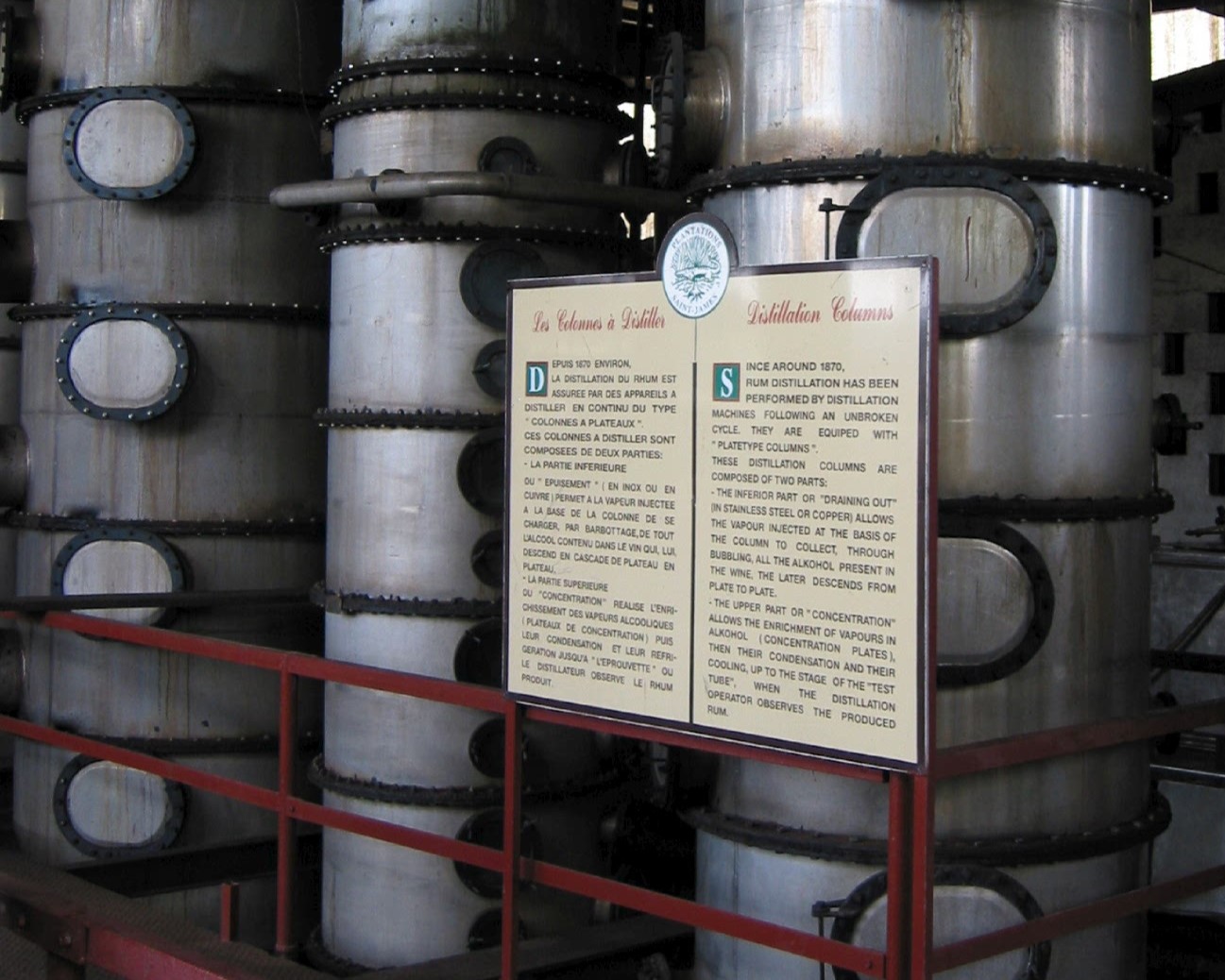Words by Joe Rogers
The first Caribbean rums were made in the mid-17th century; probably in the British colonies, but records are hazy when you get back that far. Those first new world cane spirits were all made from fermented molasses, a by-product of the sugar refining process that was formerly added to animal feed or simply thrown into the sea. By installing pot stills, planters could wring more capital out of their cane fields and those who worked them and so a new internationally traded commodity was born. Most rum distilling traditions continued along these lines – past the abolition of slavery and the decline of various empires – and into the modern industry as it exists today. This is not the case, however, in the French territory of Martinique.
Pour a measure of Martinique rum and you’ll face down a totally different animal to anything made in Barbados or Jamaica. History conspired to make the rums of the French colonies quite different to those produced elsewhere in the Caribbean. Time and circumstance drove distillers across those islands to start crushing sugarcane and fermenting the resulting juice. The rhum agricole they pioneered – literally ‘agricultural rum,’ as opposed to ‘industrial rum’ – is wild and grassy with a unique funkiness. Even those that have spent time in oak casks will often maintain a clear connection to the raw materials that comes across in the glass.
Agricole is made on other French speaking islands, of course, and made very well. Fresh cane spirits are also produced in Taiwan, Mexico, Australia and many other places besides. But those from Martinique have plenty that bears close examination. On one tiny island we find seven active distilleries, multiple terroirs for growing cane, and one of the strictest sets of rules governing any spirit in the world.
But before we get to the particulars of how rum is made on Martinique, it’s worth looking into the historical factors that made the island switch to cane juice and create rhum agricole. If there’s one person most directly responsible, it’s the man Hegel famously described as ‘history on horseback.’

ENTER NAPOLEON BONAPARTE
No, really. In 1804, Napoleon was facing the loss of the immensely valuable territory of Saint Domingue (modern day Haiti) and an impending Royal Navy blockade. While he accepted the loss of the colony, it highlighted a weakness in the form of France’s reliance on imported sugar.
Along with tobacco and tea, sugar from the Americas had helped to fuel the industrial revolution across Europe. During this time it had been transformed from a luxury into a staple of the worker’s diet, as essential to the running of the great machines of the age as coal or oil. Seeking an alternative to these vulnerable imports, Napoleon directed research into the common beet, which had been posited as a potentially viable source of crystal sugar in the previous century. In 1811, he was presented with two loaves of domestically produced white sugar by factory owner Jules Paul Benjamin Delessert – whose name is very nearly one of history’s greatest instances of nominative determinism, but alas.
As the 19th century wore on, the importance of cane sugar in France waned. Plantations across the Caribbean closed and the costly process of refining sugar in Martinique was no longer viable in the way it once was. With no steady supply of molasses for their vats, distillers across the island watched their business dwindle. That was until they began distilling the fermented juice from crushed sugarcane – a solution commonly attributed to Homère Clément, whose namesake distillery still prospers in Martinique to this day. Incidentally, the continuous column stills that helped define this new style of rum – similar to those used in Armagnac – are another innovation funded by Napoleon.
For clarity’s sake, this is not an endorsement of the emperor, whose opinions on colonialism and slavery could charitably be described as malleable. Nor is it a suggestion that he ‘invented’ the cane juice rum that proliferated across the French-speaking Caribbean. It’s more an acknowledgment of how decisions made in the metropole reverberate in the colonies and sometimes create new spirits in the process.
In other French overseas departments, molasses remains very much a part of the distilling culture, but over time the new agricole became the predominant style in Martinique.
One of the distilleries there also produces high ester molasses rums that give Jamaica a run for its money, reminding us simultaneously that Martinique is a fascinating place and that there are precious few absolutes when it comes to rum. But anyway, for now we consider Agricole.

A SENSE OF PLACE
Unlike molasses, which is relatively stable in its raw state, fresh sugarcane presents a number of challenges to the distiller. From the moment it’s cut, producers must race to crush it and start fermenting the resulting juice to maintain freshness. If the cane rests too long or the fermentation is unnecessarily prolonged, the grassy and vegetal notes for which Martinique rum is famous can be lost. Furthermore, many of the island’s producers are vocal about the sense of terroir in their rums, investing deeply in the idea that the various growing areas – which range from sandy to volcanic soils – contribute particular characteristics to their spirits. Everything about this early portion of production is geared towards maintaining a connection to the cane, the land, and the climate of Martinique.
After as little as a day in the fermentation vessel, the resulting cane wine is distilled using a single column known as the creole still. Distillation happens only once, to a proof of between 65-and-75% ABV. This is a relatively low strength in the world of spirits – modern multi-column stills can easily produce rum in excess of 90% ABV – but this level of concentration means there’s plenty of room for all the aromatic compounds that make Martinique rum so profoundly funky, raw and herbal.

After a short resting period, and providing a number of other regulatory hurdles are cleared, we then have AOC Martinique rum. This clear, intensely flavoursome style is often diluted slightly with water, though bottling strengths often exceed 50% ABV. For many of its fans, this bold expression of sugarcane and the land it grew on is perfect as it is, appealing in a similar way to mezcal or natural wine. All you really need to enjoy it is a tasting glass and a little time to let it unfold. Once you’ve sampled one of these remarkable rums in its natural state, you can also try your hand at making a Ti Punch, the national cocktail of Martinique.
There are also many aged expressions of Martinique rum. The practice of maturing agricole in oak gained momentum during times when France’s supplies of brandy were interrupted by war and blight. Recent years have also seen greater investment in cask ageing as producers on the island seek to further premiumise their wares and compete with single malt or Cognac. These agricole vieux usually make use of American oak from the US whiskey industry or casks from the French brandy and wine industries for prestige expressions. Over time, the vivid flavours of cane and earth become slightly muted as familiar tones of vanilla and spice soften the spirit. In the best aged Martinique rums however, you will still get a sense of place that will be a pleasure for any rum lover.
